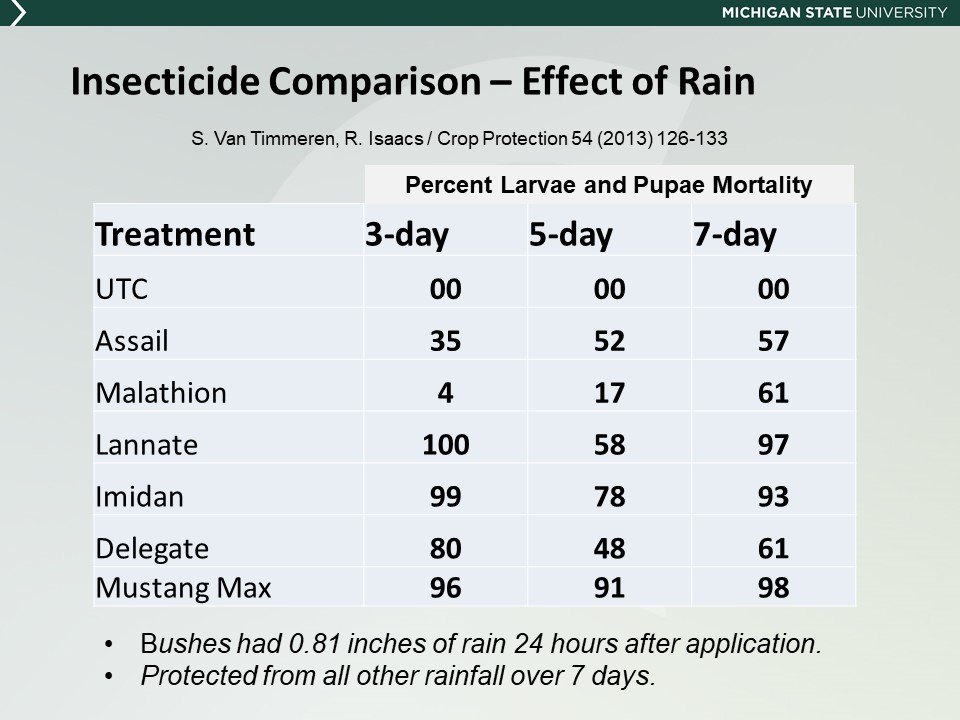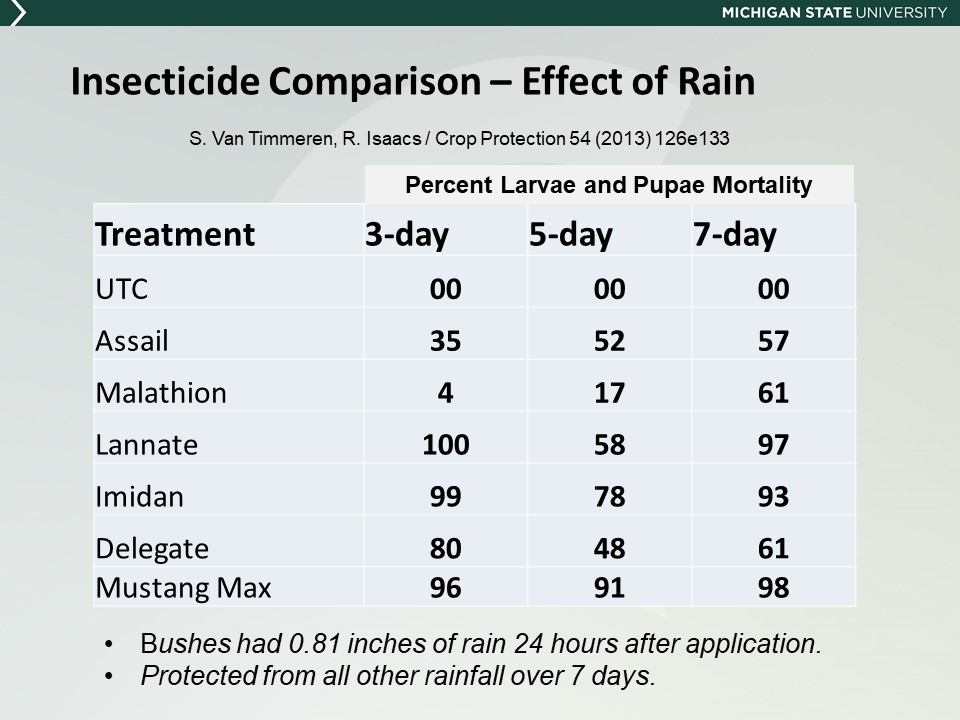West central Michigan small fruit update – July 28, 2020
Spotted wing Drosophila (SWD) continues as the major threat for blueberries and raspberries. Timely insecticide applications and fruit sampling after each application is critical to ensure the effectiveness of your SWD control program.
West central Michigan remains under a short summer drought that is already lasting more than 10 days. So far, only scattered rain showers have produced less than one quarter of an inch of rain in the area. That precipitation is not enough to satisfy the blueberry water demand. Therefore, growers are providing supplemental irrigation to maintain a healthy blueberry crop.
During the past seven days, daily average temperatures remained below the 80s. The daily maximum averaged 85 degrees Fahrenheit and the daily minimum averaged 64 F, respectively.
Blueberries are in full harvest. Currently, early season varieties are machine harvested to collect the remaining berries, and mid-season blueberries are hand-harvested for fresh pack.
Major pest problems affecting blueberries are related to the presence of spotted wing Drosophila (SWD). Until the past week, growers were able to maintain an excellent control thanks in part to hot weather conditions and low relative humidity that prevailed during last days of June and the beginning of July. However, current lower temperatures, scattered rain showers and supplemental irrigation provided by growers improved the conditions for SWD survival and reproduction. Thus, an exponential increased in SWD populations presents in berry fields was observed at the end of the past week and early this week. SWD captures in our monitoring network suddenly increased from less than 20 flies per trap to more than 100 in some places around Allegan County.
What do growers need to do under this new SWD outbreak? First, maintain a good fruit monitoring program. Monitoring for flies needs to be coupled with good monitoring of fruit infestations before and after each insecticide application and before taking your berries to the processor. Pheromone traps provide information on the presence/absence of adult flies and fruit monitoring provides information on SWD larvae infestations before and after each insecticide application. Fruit monitoring is critical to evaluate the effectiveness of your SWD control program.
To check for SWD larvae infestations in fruit, use the salt test. In addition, Rufus Issacs and Steve VanTimmeran from Michigan State University’s Department of Entomology have developed excellent monitoring tools for fruit sampling. For details on the filter method described during the SWD Friday webinar series on July 10, 2020, check the open-access article, “A Filter Method for Improved Monitoring of Drosophila suzukii (Diptera: Drosophilidae) Larvae in Fruit.”
Second, growers need to understand the characteristics of the insecticide used for SWD control. VanTimmeren and Isaacs demonstrated that Imidan, Lannat, Mustang Maxx and Brigade are broad spectrum insecticides that under no rain and moderated daily temperatures may provide an effective SWD for more than seven days after the application. However, rain and maximum daily temperatures reduced the effectiveness of some of those insecticides to no more of three days of protection (see Photos 1 and 2). Therefore, DO NOT rely solely on the label information. Check for fruit infestations after each application and three to four days after to verify that the insecticide remains active. Reapply immediately if there is a control failure.
In addition, DO NOT irrigate at least 24 hours after the insecticide application. If you do, you risk washing off the product from the berries. Irrigate first and then apply the recommended insecticide. Also, check the current and forecasted weather conditions before programming an insecticide application and select the appropriate insecticide accordingly.
If you have questions, call your local MSU Extension office for assistance with your insecticide program for SWD management.





 Print
Print Email
Email
